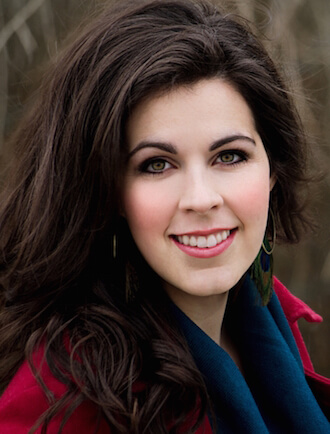Clémentine Margaine and Santiago Ballerini in the Caramoor production of Gaetano Donizetti’s “La favorite.” | GABE PALACIO
BY ELI JACOBSON | From Lully on, Italian opera composers refined, deepened, and expanded their art, composing French operas for Paris. Rossini’s “Guillaume Tell” inaugurated the grand opera form, and with Verdi’s “Don Carlos” it reached its pinnacle. Will Crutchfield has programmed both those operas in the original French as part of his “Bel Canto at Caramoor” series. So it seemed a natural progression that Caramoor should present Gaetano Donizetti’s “La favorite” on July 11 in the original French version with some restored material from the recent critical edition.
Premiered at L’Académie Royale de Musique on December 2, 1840, “La favorite” was an immediate success and remained in the Paris repertoire until 1918. But it has usually been heard internationally — including in the last Met revival in 1978 — as “La Favorita” in a bowdlerized Italian translation by Calisto Bassi distorted by religious censorship. Both Opera Orchestra of New York concerts were in Italian (the second one in 2001 using a corrected translation from the critical edition). The original French version was heard in New York as far back as 1843 and as recently as 1994 in a concert version by the enterprising L’Opéra Francais de New York (with Yves Abel conducting and Léonor sung by that fine, underrated mezzo-soprano Robynne Redmon).
The Caramoor concert version clearly showed that “La favorite” sounds better in French and that the Vaëz and Royer libretto concerning the forbidden love of a novice monk for the mistress (“favorite”) of the Castilian king still holds the stage. The forward driving dramaturgy, the abundance and variety of melodic ideas, and the elegant construction proved that “La favorite” is more than a few hit parade arias like “Spirto Gentil” and “O Mio Fernando” stuck in a rickety old vehicle rusting in the operatic junkyard.
Will Crutchfield resurrects Donizetti’s “La favorite” in its original French at Caramoor
Cast as the ill-fated lovers Fernand and Léonor were two young singers on the cusp of international careers both making New York area and role debuts. French mezzo-soprano Clémentine Margaine revealed a rich, sizeable instrument reminiscent of Rita Gorr. Margaine is already a successful Carmen (her scheduled Met debut role), and Wagner and Verdi roles are definite possibilities for the future. Her relative inexperience showed not in her vocalization, which was secure, but in dramatic projection and bel canto style. Her tone coloration needed more light and shade, the characterization and textual delivery were generalized, and the coloratura passages lacked rhythmic accentuation and élan. Despite these demerits, France has not produced a major grand opera voice like this in decades. One longs to hear Margaine develop in other roles like Didon, Dalila, and Brangaene, guided by the best conductors and stage directors. In the final Act IV duet, Margaine performed with nuance and specificity that touched the heart.
Not yet 30, the boyishly handsome Argentine tenor Santiago Ballerini overcame obvious nerves and inexperience to win over the audience. His opening aria “Un ange, une femme inconnue” was tentative and insecure but his evident youth, commitment, and fresh, slender lyric tenor prompted an ovation from a generous audience. Ballerini took courage from this and gained poise and confidence over the first two acts, singing with generosity and passion. His “Ange si pur” (“Spirto Gentil”) won huge applause and sealed a successful debut.
Despite Crutchfield’s knowledge of the older French vocal school and expert stylistic coaching, however, Ballerini sang most of his high notes loudly from the chest with minimal use of the voix-mixte head voice favored by pre-World War I French tenors. Ballerini’s slightly reedy lyric tenor needs some technical polishing and greater experience in smaller houses before he hits the big-time international circuit.
Crutchfield cast experienced Caramoor veterans as the low-voiced authority figures. Stephen Powell’s rich, oaken baritone exuded an authority appropriate for King Alphonse; his arias were stirringly sung. But bel canto suavity and gallic finesse don’t come naturally to him; this was Donizetti in Verdian mode, but impressive nonetheless. The Metropolitan Opera needs to tap this local resource and stop importing second-rate baritones in the Italian repertory. The confrontation duet with Léonor and Alphonse built to an exciting climax thanks to the restoration of its cabaletta conclusion not heard since the opening night in 1840.
Bass-baritone Daniel Mobbs delivered Balthazar’s stern warnings and wrath of God denunciations with cool command and elegance. Isabella Gaudí as Inès produced some wiry tone on top.
Under Crutchfield’s enthusiastic baton, the Orchestra of St. Luke’s gave a buoyant reading with virtuosic instrumental solos in the Act II ballet. There were minimal cuts in the score; hearing all the cabalettas, ballet music, and choruses revealed a wider dramatic and musical palette ranging from brilliant public display to spare, somber private tragedy. The whole definitely was greater than the sum of the individual parts, and that is credit to the musical achievement of Donizetti and the informed advocacy of Crutchfield.



































